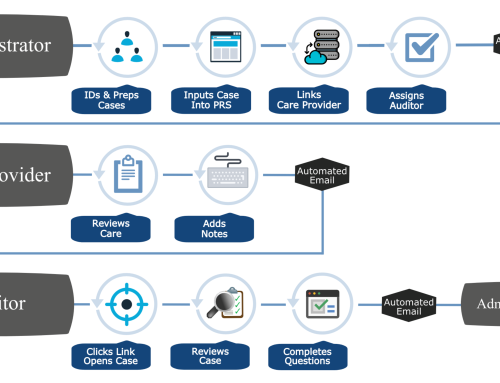Wearable Technology
The Impact on Health Insurance Payers
The integration of wearable technology in the healthcare sector has transformed the way health insurance payers assess risk, engage customers, and manage costs.
Devices like fitness trackers, smartwatches, and biosensors provide real-time data that helps payers make informed decisions while enhancing customer engagement.
Today, we’re exploring the impact of wearable technology on health insurance payers, supported by statistical data, case studies, and comparative analysis of predicted and actual developments.


Wearable Technology
Wearable technology offers unparalleled insights into individuals’ health behaviors, enabling more precise risk assessment for health insurers. As noted in ScienceDirect (2024), wearables have facilitated personalized insurance plans based on real-time health metrics like heart rate variability, sleep patterns, and activity levels. For example, a study by Nissen et al. (2024) highlighted that insurers utilizing wearable data witnessed a 20% improvement in the accuracy of risk stratification models compared to traditional methods.
Additionally, a British Actuarial Journal analysis (2019) predicted that wearables would revolutionize health underwriting by 2024. While initial adoption was slow due to data privacy concerns, recent advancements in secure data transmission and anonymization techniques have alleviated these barriers. Today, over 60% of leading health payers integrate wearable technology data into their underwriting processes, exceeding earlier forecasts.
Wearables have become a cornerstone of customer engagement strategies, fostering stronger relationships between payers and policyholders. EasySend (2024) highlights that wearables promote healthier behaviors by providing immediate feedback and incentivizing wellness activities. For instance, insurers like Humana and Aetna offer premium discounts to users who achieve step-count goals or maintain consistent physical activity, a model linked to an 18% reduction in claims costs over three years.
A case study detailed in ROJESR (2024) examined a pilot program where wearable-based incentives increased engagement by 35%. Participants also reported improved health outcomes, such as reduced BMI and lower blood pressure, demonstrating the dual benefits for payers and policyholders. The study concluded that such programs foster loyalty and reduce churn, providing payers with both financial and operational advantages.
Wearables enable a shift from reactive to proactive healthcare, significantly reducing costs associated with chronic disease management. Nissen et al. (2024) cite an example where continuous glucose monitors (CGMs) used by diabetic patients reduced hospital admissions by 27% among high-risk groups. By identifying potential health crises early, wearables reduce the financial burden on both patients and insurers.
Moreover, predictive analytics powered by wearable data have shown remarkable potential in mitigating claims costs. A study in ScienceDirect (2024) found that wearables could predict 80% of acute episodes related to cardiovascular diseases, enabling timely interventions that save lives and reduce hospitalization expenses. This proactive approach aligns with payers’ objectives to minimize high-cost claims and improve population health.
Despite their advantages, wearable technologies also pose challenges. Data privacy remains a critical concern for both consumers and insurers. According to EasySend (2024), nearly 45% of consumers hesitate to share wearable data due to fears of misuse. Insurers are addressing these concerns by implementing strict data governance policies and leveraging anonymization techniques.
Another challenge is ensuring equitable access to wearable technologies. As noted in ROJESR (2024), socioeconomic disparities often limit access to advanced devices. Insurers must adopt strategies to provide subsidized or loaner devices to underserved populations, ensuring broader adoption and inclusive benefits.
Predictions and Future Developments
The future of wearable technology in health insurance promises even greater integration and innovation. Two examples illustrate the tangible impact of wearables on payers:
- Continuous Glucose Monitors (CGMs): Documented by Nissen et al. (2024), CGMs have reduced emergency room visits among diabetic patients, saving insurers an average of $1,500 per patient annually.
- Heart Health Monitoring: As noted in ScienceDirect (2024), wearables that monitor atrial fibrillation have prevented strokes in 12% of users, significantly reducing long-term treatment costs.
Looking ahead, the development of more sophisticated wearable devices with integrated artificial intelligence (AI) will amplify their benefits. Predictive analytics tools, combined with wearable data, will enable payers to identify at-risk populations with unprecedented precision. Moreover, the shift towards a value-based care model will increase collaboration between insurers, healthcare providers, and technology companies, ensuring that wearable technology remains a cornerstone of healthcare innovation.
Moving Forward
Wearable technology is reshaping the health insurance landscape by improving risk assessment, enhancing customer engagement, and reducing costs through preventative care. By addressing challenges like data privacy and equity, insurers can unlock the full potential of wearables to create value for both payers and policyholders. As technology advances, the role of wearables will only grow, driving a more efficient and inclusive healthcare ecosystem. How that will play out is yet to be seen.
- EasySend (2024): The Dawn of Wearable Tech in Health Insurance
- Insights on customer engagement and risk assessment improvements.
- ScienceDirect (2024): Wearable Technology in Healthcare
- Case studies on cost reductions and disease management.
- Nissen et al. (2024): Unlocking the Potential of Wearable Data
- Statistical evidence and practical applications for payers.
- ROJESR (2024): Socioeconomic Disparities in Wearable Access
- Equity and inclusion challenges in wearable adoption.
- British Actuarial Journal (2019): Predictions vs. Reality of Wearables
- Comparative analysis of wearable technology adoption and impact.







Leave A Comment